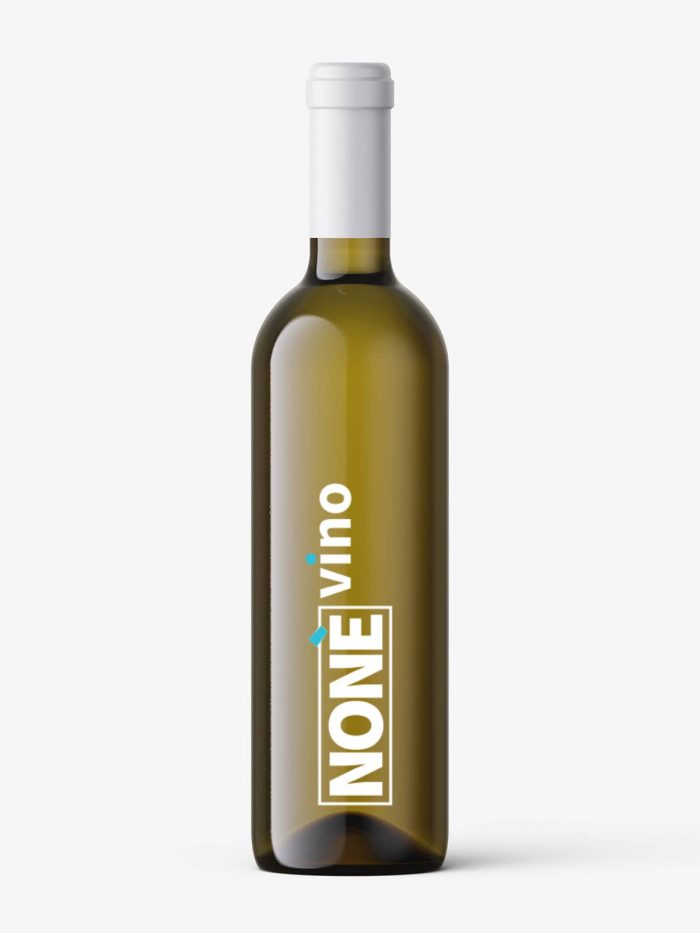Trebbiano d’Abruzzo DOC Appellation
Protected Designation of Origin (PDO)


The presence of the Trebbiano grape in central Italy can be traced back to Roman times. In fact Pliny described a “Vinum trebulanum” whose name is given by the adjective trebulanus, which derives from the noun trebula, with the meaning of farmhouse or farm. The term Trebbiano, according to its etymology, therefore generally indicates a local white wine that today we will define peasant or homemade, produced in the various farms or farms in the countryside and used by the farmers themselves.
Whatever its origin, however, we have to wait until the beginning of the fourteenth century for Pier dé Crescenzi to describe for the first time a vine of Trebbiano: “… and another type of grape which Trebbiana is dicta and is white with round grain, piccholo and many grapes to have … “.
In the 1500s Sante Lancerio, bottle holder of Pope Paul III, recalls how the cultivation of Trebbiano was widespread in Tuscany, as well as at the end of the same century the Marches Andrea Bacci, personal doctor of Pope Sixtus V, in the cited work speaks of numerous wines Trebulani and reports the presence of “Moscatelle and Trebulane grapes” also in the territories adjacent to Lake Fucino and in the Peligna area.
The presence of Trebbiano in Abruzzo is also revealed later in the monograph by Raffaele Sersante of 1856, which recalls how this variety was widely diffused and known.
Today a large number of vines bear the name of Trebbiano, often accompanied by a geographical name that should indicate the place of origin or the place of greatest diffusion, but trying to describe the differences is a very difficult undertaking, as the illustrious ampelographer of the first reminds us. ‘900 Giuseppe di Rovasenda and later Marzotto. In fact, for many years, the Abruzzese Trebbiano was confused with the white Bombino so much that in the production disciplinary of the “Trebbiano d’Abruzzo” approved in 1972 it was stated that the wine “must be obtained from grapes from vineyards composed of Trebbianograpes from vineyards composed of Trebbiano vines d’Abruzzo (White Bombino) and / or Tuscan Trebbiano … “.
These vines are in fact the fundamental basis of the white wine with the most important and widespread denomination of the Abruzzo region, whose disciplinary has been adapted several times to better meet the needs of a consumer who is increasingly attentive to quality. Therefore the incidence of human factors is fundamental since, through the definition and improvement of some viticultural and oenological practices, which are an integral and substantial part of the production disciplinary, today it is possible to obtain products with marked characteristics and typicality.
The DOC Trebbiano d’Abruzzo wine obtained the recognition of the Controlled Designation of Origin on June 28, 1972.
Territory
The geographical area dedicated to the production of DOC Trebbiano d’Abruzzo wine includes the entire coastal and foothill hilly area of the Abruzzo region which, in the middle part, extends inwards to include the Alto Tirino plateau towards the north, to the north-west the Subequana Valley, the Peligna Valley to the south and the Roveto Valley to the south-west.
The Production Area of DOC Trebbiano d’Abruzzo Wine is located in:
– province of Chieti , and includes the territory of the municipalities of Altino, Archi, Ari, Anelli, Atessa, Bomba, Bucchianico, Canosa Sannita, Casacanditella, Casalanguida, Casalincontrada, Carpinete Sinello, Casalbordino, Casoli, Castel Frentano, Celenza sul Trigno, Chieti, Crecchio, Cupello, Farà Filiorum Petri, Fillet, Fossacesia, Francavilla, Fresagrandinaria, Frisa, Furci, Gissi, Giuliano Teatino, Guardiagrele, Lanciano, Lentella, Miglianico, Monteodorisio, Mozzagrogna, Orsogna, Ortona, Paglieta, Palmoli, Perano, Putoggiofiorito , Ripa Teatina, Roccamontepiano, Rocca San Giovanni, San Buono, Sant’Eusanio del Sangro, San Giovanni Teatino, Santa Maria Imbaro, San Martino sulla Marrucina, San Salvo, San Vito Chietino, Scemi, Tollo, Torino di Sangro, Torrevecchia Teatina, Treglio, Vasto, Villalfonsina, Villamagna and Vacri.
province of L’Aquila , and includes the territory of the municipalities of Acciano, Anversa degli Abruzzi, Balsorano, Bugnara, Canistro, Capestrano, Castel di Ieri, Castelvecchio Subequo, Civita d’Antino, Civitella Roveto, Cocullo, Corfinio, Fagliano Alto, Fontecchio , Fossa, Cagliano Aterno, Goriano Sicoli, Introdacqua, Molina Aterno, Merino, Ofena, Pacentro, Poggio Picenze, Pratola Peligna, Pettorano sul Gizio, Prezza, Raiano, Rocca Casale, San Demetrio nei Vestini, Sant’Eusanio Forconese, San Vincenzo Valle Roveto, Secinaro, Sulmona, Tione d’Abruzzi, Villa S. Angelo, Villa S. Lucia and Vittorito.
– province of Pescara , and includes the territory of the municipalities of Alanno, Bolognano, Brittoli,Bussi, Cappelle sul Tavo, Castiglione a Casauria, Catignano, Cepagatti, Città Sant’Angelo, Civitella Casanova, Civitaquana, Collecorvino, Corvara, Cugnoli, Elice, Farindola , Lettomanoppello, Loreto Aprutino, Manoppello, Montebello di Bertona, Montesilvano, Moscufo, Nocciano, Penne, Pianella, Pietranico, Picciano, Pescara, Pescosansonesco, Popoli, Rosciano, San Valentino, Scafa, Serramonacesca, Spoltore, Tocco Casauria, Torre de ‘Passeri , Turrivalignani and Vicoli.
– province of Teramo , and includes the territory of the municipalities of Alba Adriatica, Ancarano, Atri, Basciano, Bellante, Bisenti, Campii, Canzano, Castel Castagna, Castellato, Castiglione Messer Raimondo, Castilenti, Cellino Attanasio, Cermignano, Civitella del Trento, Colledara, Colonnella, Controguerra, Corropoli, Giulianova, Martinsicuro, Montefìno, Montorio al Vomano, Morrodoro, Mosciano, Nereto, Notaresco, Penna S. Andrea, Pineto, Roseto degli Abruzzi, Sant’Egidio, Sant’Omero, Silvi, Teramo, Torano Nuovo, Tortoreto, Tossicia and the hamlet of Trignano in the municipality of Isola del Gran Sasso.
Vinification and Aging
During the vinification phases, only loyal and constant oenological practices of the area are allowed, suitable to give the wines their particular quality characteristics.
The oenological winemaking practices of DOC Trebbiano d’Abruzzo wines include, among other things, that:
– The maximum yield of grapes into DOC Trebbiano d’Abruzzo wine must not exceed 70%; if these parameters are exceeded within the limit of 5%, the excess will not be entitled to the DOC. Beyond these limits the right to DOC for the whole product lapses.
– In the designation of the DOC Trebbiano d’Abruzzo wines, the term ” Vigna ” may be mentioned as long as it is followed by the relative toponym and certain winemaking practices are respected.
– The Trebbiano d’Abruzzo Riserva DOC wine must undergo a minimum aging period of 24 months.


